by Anthony V Sorrentino
Introduction
Mark your calendar, a rare breath-taking celestial event, an eclipse of the sun will be visible in much of New York State on April 8, 2024. Earth has 2-5 solar eclipses every year, but a total solar eclipse happens only once every few years. Because only a small area of earth can view a total solar eclipse, any specific place on earth can expect to view a total solar eclipse once every 400 years. The last total solar eclipse in the United States was in 1979, and the next one will occur on August 23, 2044. Although the 2024 eclipse will be visible in all 50 states, only people along a narrow 100+ mile wide band from Texas to Maine will be able to view totality, the complete blockage of sunlight.
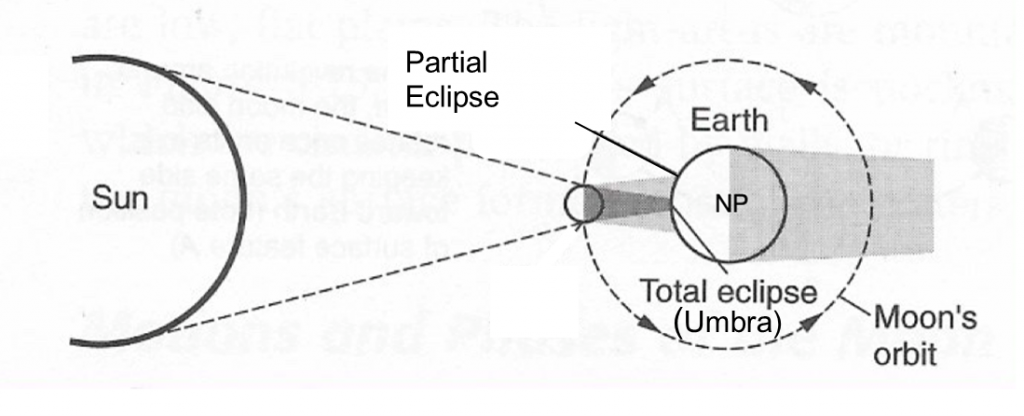
When the moon comes between the sun and earth, and all three bodies are on the same plane, the moon casts a shadow on earth’s surface. The inner dark portion of the shadow is called the umbra, and the outer lighter portion of the shadow is called the penumbra. Because the earth rotates and the moon revolves around earth, the shadow moves in a curved path across earth’s surface from a westerly to easterly direction. Within the umbra portion of the shadow the moon will completely block sunlight and a total solar eclipse will be visible; within the penumbra a partial solar eclipse will be produced.
A simulation showing the moving shadow viewed from a position 100 miles above earth’s surface can be viewed on the Internet at greatamericaneclipse.com. The black oval (see picture below) represents the 100+ mile wide umbra; the penumbra extends 3,000 miles out from the umbra. The arrow represents the shadow moving about 2,600 mph toward the northeast. Plattsburgh (3) and Schroon Lake (2) are in the umbra and will experience a total solar eclipse; Lake George (1) is outside the umbra and will experience a partial solar eclipse.
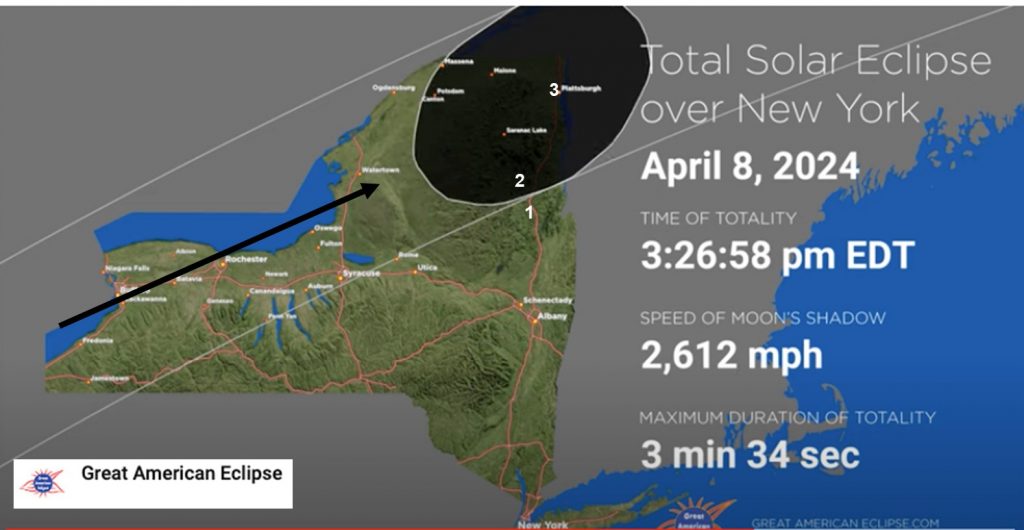
Duration of the total solar eclipse will be about 3.5 minutes in Plattsburgh, and the umbra will pass over Schroon Lake in a little more than 1 minute. This is because Plattsburgh will pass through a wider portion of the umbra than Schroon Lake.
CAUTION
It is never safe to look directly at the sun, this is especially true during a solar eclipse when you are tempted to view the moon crossing in front of the sun. Sunlight can cause major eye damage. The only way to view the sun safely during a solar eclipse is through special filtering glasses; not sun glasses, which are not safe for looking at the sun. During the few minutes of totality, when the moon is blocking 100% of the sunlight, you may look at the eclipse without filtered glasses, however as soon as sunlight appears you need the protection of filtered glasses. Note: Search the Internet to learn how to view the eclipse with a pin hole camera; another safe way to view a solar eclipse
Total Solar Eclipse Features
Some observable features visible during a total solar eclipse are:
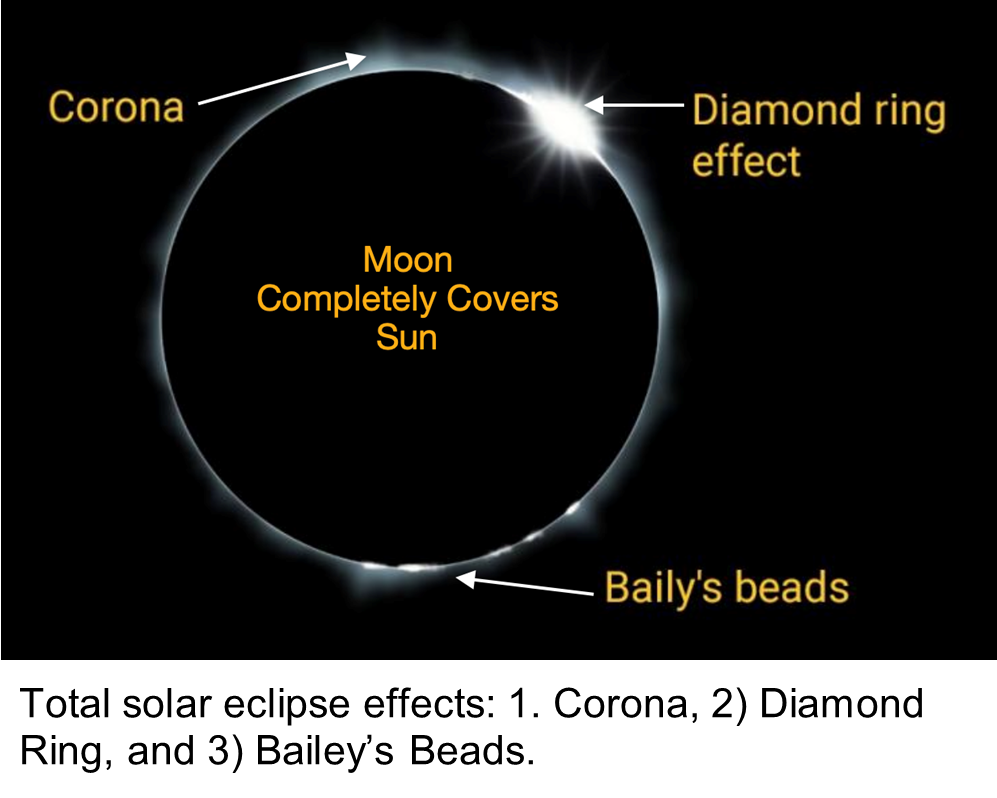
Baily’s Beads: beads of light appear on the edge of the moon, caused by sunlight passing between the mountains on the moon.
Corona: outer layer of sun’s atmosphere, usually hidden by sun’s bright surface, several million miles thick, viewed during total solar eclipse.
Diamond Ring Effect: occurs the moment totality begins and ends, the last bit of sunlight disappears and appears again.
Chromosphere: layer of sun’s atmosphere below the corona that emits a reddish glow, viewed during total solar eclipse.
Pinhole Camera Effect: images of solar eclipse produced by a small opening (i.e. pinhole), the effect can cause tree leaves to produce inverted images of the eclipsed sun on the ground. Visible Planets and Stars: during totality the night sky appears around the moon making the stars and planets visible
Total Solar Eclipse Events
A total solar event refers to the visual relationship of the sun and moon during a solar eclipse. The start of a partial eclipse occurs the moment the moon begins to move in front of the sun. A partial eclipse lasts more than an hour as the moon crosses in front of the the sun causing western daylight to fade very slowly. About 15 minutes before totality, shadows become sharper, the western sky darkens, and the pinhole effect is visible. Eventually, at the start of the total eclipse stars and planets appear. As maximum eclipse approaches the diamond ring, Baily’s Beads, the chromosphere, and the crown jewel, the corona appear. At the end of the solar eclipse everything continues in reverse order until the end of the partial eclipse and back to normal sunlight.
When and Where
On April 8, 2024 a solar eclipse will be visible anywhere in New York State; however only upstate New York will have the pleasure of seeing the total solar eclipse. Outside the darker portion of Moon’s shadow people will only see a partial solar eclipse. Unfortunately, Warrensburg and Lake George will be outside the total eclipse area, but a short distance north at Schroon Lake, people will be able to view a total solar eclipse. At Schroon Lake the maximum solar eclipse will occur at 3:27 PM and will last 1m 7s. Fifty miles farther north at Whiteface Mountain the total eclipse duration time will be almost 3m 30s.
Tables A and B below provide specific information about the eclipse at A) Warrensburg, Chestertown, and Tripp Pond, and at B) Whiteface Mountain. The Warrensburg/Lake George area will receive a 99.4% partial solar eclipse, and from Schroon Lake north to Canada you will be able to view a total solar eclipse.
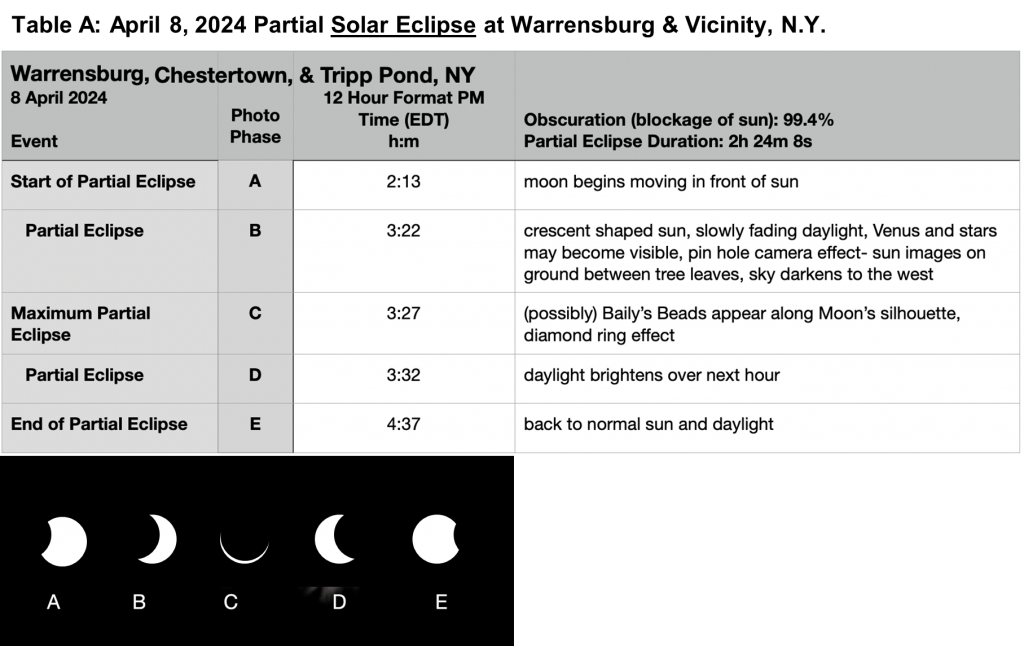
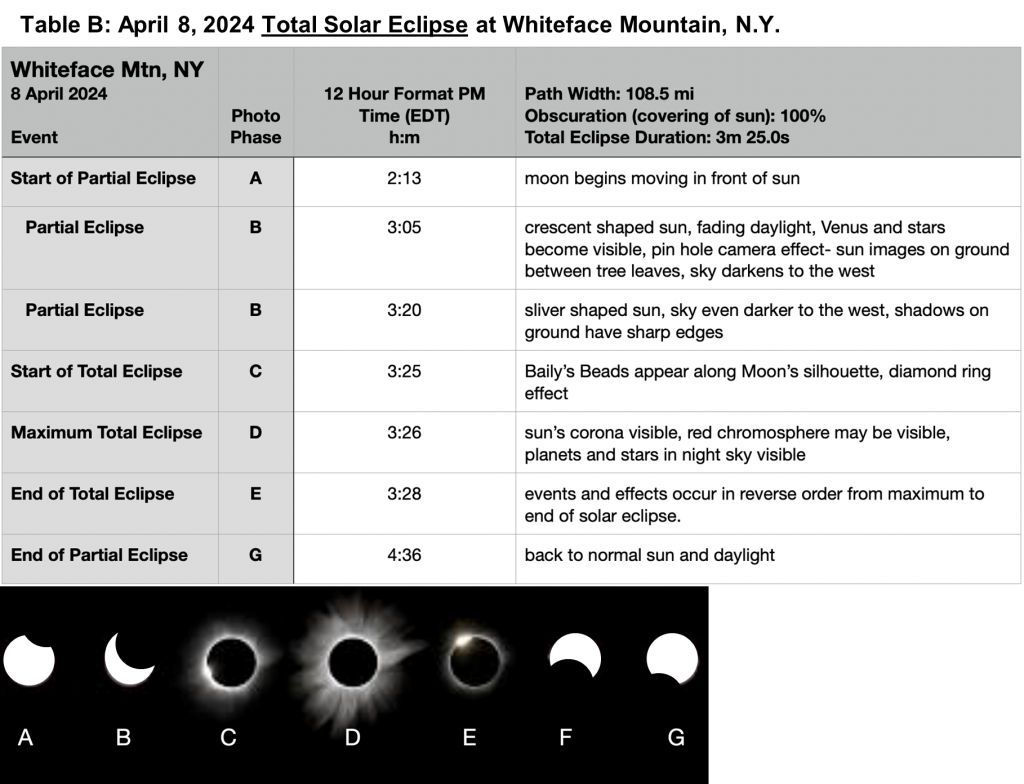
Being cloud free is essential for anyone to observe a solar eclipse. Be aware of the weather and be ready to travel if necessary to ensure a view of this spectacular event.
